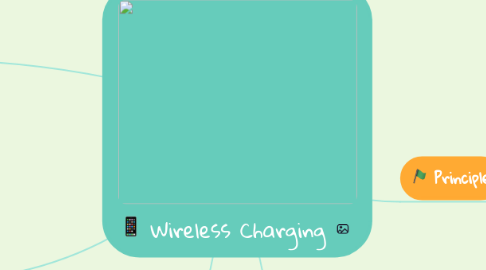
1. Development
1.1. 1.Many medical equipments and devices can be charged though wireless charger.
2. Usage
2.1. To charge the electron devices without a wire.
3. Advantages & Disadvantages
3.1. Advantages
3.1.1. No wire
3.1.2. Charging step is easy
3.1.3. Safe
3.1.4. Save time and money
3.1.5. Do not need to mess with cable charger
3.2. Disadvantages
3.2.1. Lower efficiency
3.2.2. Heat wastage
3.2.3. The phone cannot be moved around
3.2.4. The compatibility is not good enough
4. Application
4.1. Current
4.2. Future
4.2.1. Vital role: medicine and medical care. Wireless power provides real benefit in such sterile and high traffic environments where traditional connectors become not only source of contamination, but also a physical hazard.
5. History
5.1. In 1902,Tesla filed a patent titled “Apparatus for Transmitting Electrical Energy” in which he describes a device that he believed could transmit electrical power from one conductor to another without the need for wires.
5.2. In 2006, researchers at the MIT reported that they had discovered an efficient way to transfer power between coils separated by a few meters.
5.3. In August 2009, a consortium of interested companies called the Wireless Power Consortium announced they were nearing completion for a new industry standard for low power Inductive charging .
6. Principle
6.1. Wireless power transmission technologies.
6.1.1. Use time-varying electric, magnetic, or electromagnetic fields.
6.1.1.1. 1.Main voltage convert into high frequency alternating current(AC)
6.1.1.2. The alternating current is sent to the transmitter coil by the transmitter circuit.
6.1.1.3. Alternating current flowing within the transmitter coil creates a magnetic field which extends to the receive coil
6.1.1.4. The magnetic field generates current within the receiver coil of the device.
6.1.1.5. Current flowing within the receiver coil is converted into direct current(DC) by the receiver circuit, this charging the battery of the device.

